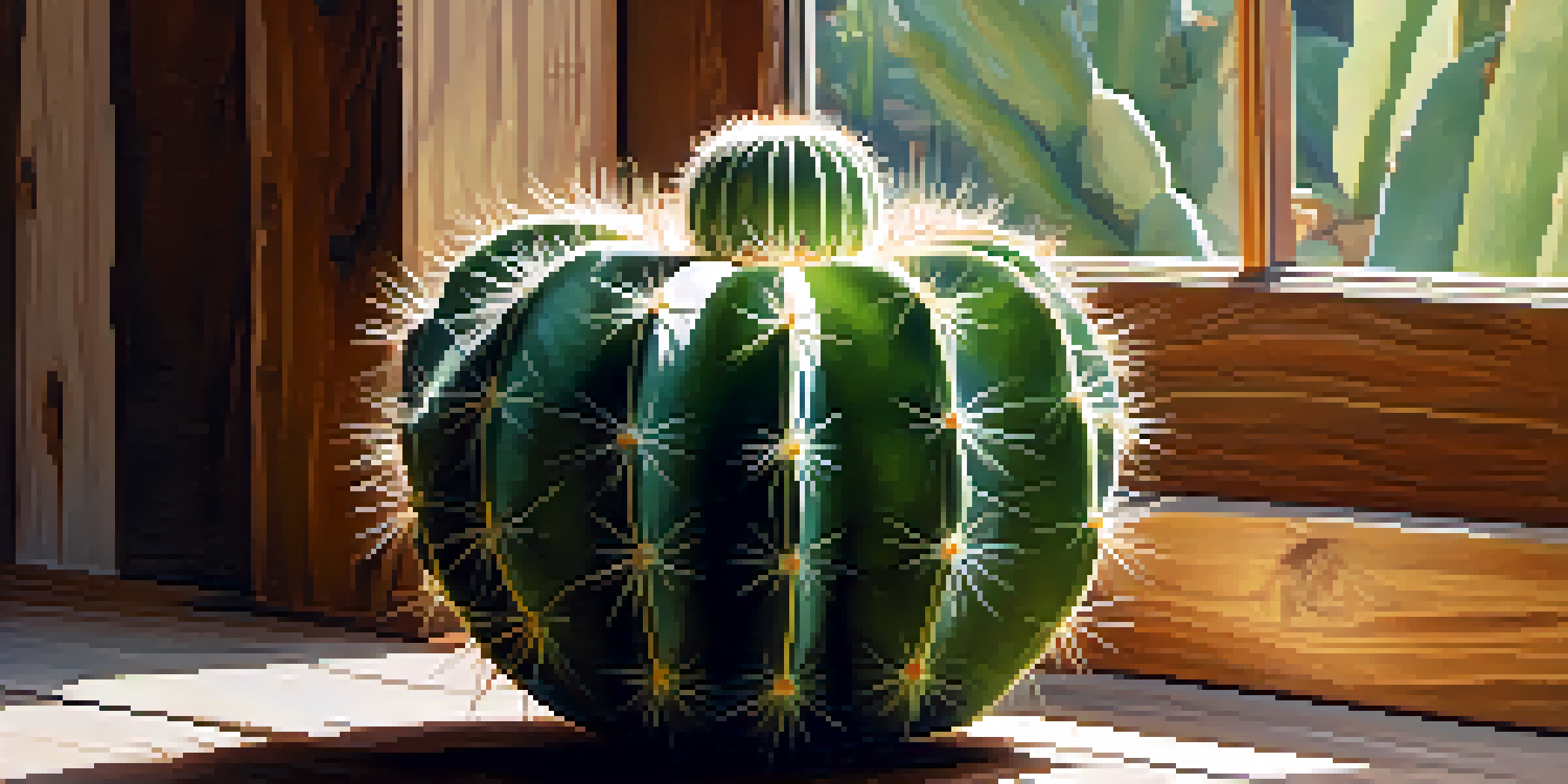Understanding Peyote: A Journey into Blissful Experiences

What is Peyote? An Introduction to the Cactus
Peyote is a small, spineless cactus native to Mexico and the southern United States. Known scientifically as Lophophora williamsii, this unique plant has been used for thousands of years, mainly by Indigenous peoples for spiritual and medicinal purposes. Its psychoactive properties come from a compound called mescaline, which alters perception and consciousness.
Psychedelics can help us connect to the profound wisdom of our own inner selves, and peyote is a powerful teacher in that journey.
The appearance of peyote is quite distinct, featuring a round, button-like shape with a greenish hue. When dried, these buttons become the primary form used in rituals and ceremonies. It’s fascinating how something so unassuming can hold such profound significance in various cultures.
Understanding peyote isn’t just about recognizing it as a cactus; it’s about appreciating its role in the rich tapestry of human experience. From ancient rituals to modern explorations of consciousness, peyote remains a powerful symbol of connection to the spiritual realm.
A Brief History of Peyote Use in Indigenous Cultures
Peyote has a long-standing history as a sacred plant among Indigenous peoples, particularly in North America. It has been used for spiritual ceremonies, healing practices, and communal gatherings for centuries. The Native American Church notably incorporates peyote in its rituals, emphasizing its significance in fostering spiritual growth and community bonds.

Archaeological evidence suggests that peyote use dates back over 5,000 years, showcasing its deep roots in cultural practices. Stories passed down through generations highlight the cactus as a source of wisdom and enlightenment, often referred to as a 'teacher' by those who partake in its effects.
Peyote's Cultural and Spiritual Role
Peyote is a sacred cactus integral to Indigenous spiritual practices, symbolizing community connection and personal healing.
As we explore its history, we see how peyote serves not just as a tool for individual experiences, but as a bridge connecting communities to their heritage and spirituality. This shared understanding and respect for the plant underline its importance in Indigenous cultures.
How Peyote Affects the Mind and Body
When consumed, peyote induces a range of effects that can vary from person to person. Common experiences include visual and auditory hallucinations, a heightened sense of awareness, and profound emotional shifts. These effects are primarily due to mescaline interacting with receptors in the brain, particularly those related to serotonin.
The plant is not a drug; it is a sacred medicine that has the ability to heal and connect us to the spiritual realm.
Many users report feelings of euphoria, enhanced creativity, and a deep sense of connection to nature and the universe. However, it’s important to note that the experience can also involve challenging emotions or insights, often referred to as 'the dark side of the journey.' This duality is why preparation and guidance are essential when exploring peyote’s effects.
Understanding these effects helps demystify the peyote experience, allowing individuals to approach it with respect and intention. As with any profound journey, awareness of one's mindset and environment plays a crucial role in shaping the experience.
The Spiritual Significance of Peyote in Rituals
In many Indigenous cultures, peyote is regarded as a sacred medicine that facilitates communication with the divine. Rituals often involve prayer, singing, and drumming, creating a communal atmosphere that enhances the spiritual experience. These practices are designed to foster a sense of unity among participants and deepen their connection to the plant.
The journey with peyote is often seen as a pathway to self-discovery and healing. Participants might seek guidance on personal issues, clarity on life decisions, or simply a deeper understanding of their place in the universe. This sacred approach transforms what could be a mere recreational experience into a profound spiritual quest.
Effects of Peyote on Mind and Body
The consumption of peyote leads to various psychological effects, including hallucinations and emotional shifts, influenced by its active compound, mescaline.
By recognizing peyote's role in these rituals, we gain insight into its broader cultural significance. It’s not just about the individual experience; it’s about honoring traditions, fostering community, and navigating the complexities of life through a spiritual lens.
Modern Perspectives on Peyote and Its Use
As society evolves, so does the perception of peyote and its use. In recent years, there has been a growing interest in the therapeutic potential of psychedelics, including peyote. Studies suggest that mescaline may help alleviate symptoms of depression, anxiety, and PTSD, prompting a reevaluation of its role in mental health treatment.
However, with increased interest comes the need for responsible use and respect for Indigenous practices. The commercialization of peyote can lead to cultural appropriation, diluting its significance and undermining the traditions that have preserved it for centuries. It’s essential to approach peyote use with an understanding of its cultural roots and ethical considerations.
Modern perspectives on peyote invite a dialogue about the balance between tradition and innovation. As we explore its therapeutic potential, we must also honor the voices and wisdom of those who have revered this plant long before us.
Legal Status and Ethical Considerations of Peyote
The legal status of peyote varies significantly across different regions, often reflecting the tension between traditional use and modern regulations. In the United States, peyote is classified as a Schedule I substance, which means it is illegal for general use. However, exceptions exist for recognized Native American tribes using it in religious ceremonies.
This legal framework raises important ethical questions about access and rights. As interest in psychedelics grows, advocates argue for the need to protect Indigenous sovereignty and ensure that traditional practices are respected. The discussion around peyote’s legality is intertwined with broader conversations about cultural heritage and the rights of Indigenous peoples.
Legal and Ethical Dimensions
The legal status of peyote varies by region, raising ethical questions about access, cultural appropriation, and the rights of Indigenous peoples.
Navigating these legal landscapes requires sensitivity and awareness. Understanding the implications of peyote use not only informs responsible practices but also encourages respect for the communities that have cherished this plant for generations.
Preparing for a Peyote Experience: Best Practices
If you're considering a peyote experience, preparation is key to ensuring a safe and meaningful journey. Start by educating yourself about the plant, its effects, and its cultural significance. Understanding what to expect can help you approach the experience with the right mindset and intentions, setting the stage for a transformative journey.
Creating a comfortable environment is equally important. Whether you're participating in a group ceremony or exploring peyote on your own, ensure that your surroundings are safe and conducive to introspection. Many people find that natural settings enhance their connection to the experience and foster a sense of peace.

Lastly, consider seeking guidance from experienced practitioners or facilitators. Their insights can provide valuable support and navigate the complexities of the peyote experience. With the right preparation, you can embark on a journey that honors the rich tradition of peyote and opens doors to deeper understanding.